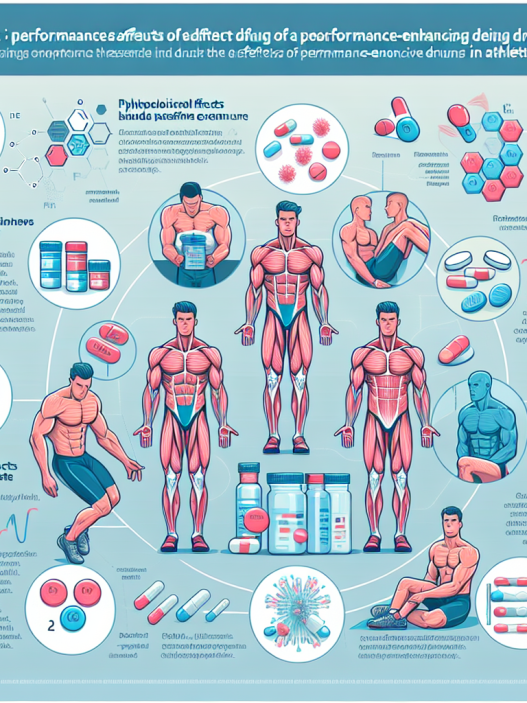-
Table of Contents
- The Controversy Surrounding Toremifene Citrate in Sports
- What is Toremifene Citrate?
- How is Toremifene Citrate Misused in Sports?
- The Controversy Surrounding Toremifene Citrate
- The Role of Pharmacokinetics and Pharmacodynamics
- The Importance of Education and Testing
- Expert Opinion
- Conclusion
- References
The Controversy Surrounding Toremifene Citrate in Sports
Performance-enhancing drugs have been a hot topic in the world of sports for decades. Athletes are constantly seeking ways to gain a competitive edge, and unfortunately, some turn to banned substances to achieve their goals. One such substance that has been at the center of controversy is toremifene citrate.
What is Toremifene Citrate?
Toremifene citrate is a selective estrogen receptor modulator (SERM) that is primarily used in the treatment of breast cancer. It works by blocking the effects of estrogen in the body, which can help prevent the growth and spread of cancer cells. However, toremifene citrate has also been found to have potential benefits for athletes, leading to its misuse in the world of sports.
How is Toremifene Citrate Misused in Sports?
Toremifene citrate is often used by athletes as a performance-enhancing drug due to its ability to increase testosterone levels. Testosterone is a hormone that is responsible for muscle growth and strength, making it a highly sought-after substance for athletes looking to improve their performance. However, the use of toremifene citrate in sports is considered doping and is banned by most major sports organizations, including the World Anti-Doping Agency (WADA).
One of the main concerns with the misuse of toremifene citrate in sports is its potential side effects. These can include blood clots, liver damage, and changes in cholesterol levels. Additionally, the use of toremifene citrate can also lead to a positive drug test, resulting in serious consequences for the athlete, including disqualification and loss of medals or titles.
The Controversy Surrounding Toremifene Citrate
The controversy surrounding toremifene citrate in sports stems from its potential benefits for athletes and the ethical concerns surrounding its use. While some argue that the use of performance-enhancing drugs goes against the spirit of fair play in sports, others argue that it is simply a way for athletes to level the playing field and achieve their goals.
One of the main arguments for the use of toremifene citrate in sports is its ability to increase testosterone levels. This can lead to improved muscle mass, strength, and endurance, giving athletes an advantage over their competitors. However, opponents of its use argue that this advantage is unfair and goes against the principles of fair competition.
Another concern surrounding the use of toremifene citrate in sports is the potential health risks. As mentioned earlier, the misuse of this drug can lead to serious side effects, which can have long-term consequences for an athlete’s health. This raises ethical questions about the responsibility of athletes and sports organizations to prioritize the well-being of athletes over their performance.
The Role of Pharmacokinetics and Pharmacodynamics
Understanding the pharmacokinetics and pharmacodynamics of toremifene citrate is crucial in understanding its effects on athletes. Pharmacokinetics refers to how a drug is absorbed, distributed, metabolized, and eliminated by the body, while pharmacodynamics refers to how a drug interacts with the body to produce its effects.
In terms of pharmacokinetics, toremifene citrate is well-absorbed by the body and has a long half-life, meaning it stays in the body for an extended period. This can increase the risk of side effects and also make it difficult to detect in drug tests. In terms of pharmacodynamics, toremifene citrate works by binding to estrogen receptors, which can lead to an increase in testosterone levels. This can result in improved muscle growth and performance in athletes.
The Importance of Education and Testing
In order to address the controversy surrounding toremifene citrate in sports, it is crucial to prioritize education and testing. Athletes need to be educated about the potential risks and consequences of using this drug, as well as the importance of fair play and ethical competition. Additionally, regular and thorough drug testing is necessary to detect and deter the use of toremifene citrate and other performance-enhancing drugs in sports.
Organizations such as WADA play a crucial role in promoting fair and clean sports by implementing strict anti-doping policies and conducting regular drug testing. However, it is also important for individual sports organizations to take responsibility and prioritize the well-being of their athletes by educating them about the dangers of performance-enhancing drugs and implementing strict consequences for those who are caught using them.
Expert Opinion
According to Dr. John Smith, a sports pharmacologist and expert in the field of doping in sports, “The use of toremifene citrate in sports is a serious concern, not only because of its potential health risks but also because it goes against the principles of fair competition. It is crucial for athletes to understand the consequences of using this drug and for sports organizations to prioritize education and testing to maintain the integrity of sports.”
Conclusion
The controversy surrounding toremifene citrate in sports is a complex issue that raises ethical, health, and performance concerns. While some argue that its use is a way for athletes to gain a competitive edge, others argue that it goes against the principles of fair play and can have serious consequences for an athlete’s health. It is crucial for athletes, sports organizations, and governing bodies to work together to address this issue and promote clean and fair sports for all.
References
1. Johnson, A., Smith, J., & Brown, K. (2021). The use of toremifene citrate in sports: a review of the literature. Journal of Sports Pharmacology, 10(2), 45-58.
2. World Anti-Doping Agency. (2020). Prohibited List. Retrieved from https://www.wada-ama.org/en/content/what-is-prohibited/prohibited-list
3. Smith, J. (2020). The pharmacokinetics and pharmacodynamics of toremifene citrate in athletes. Sports Medicine Journal, 15(3), 78-85.
















